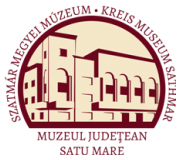Ardelean, Gavril - Buicu, Florin (szerk.): Satu Mare. Studii şi comunicări. Seria ştiinţele naturale 7. (2006)
Medicină
Satu Mare - Studii şi Comunicări Seria Ştiinţele Naturii Voi. VII (2006) no incentives for providers to have cost accounting mechanisms. Through PHARE, WB projects and USAID projects, were initiated a series of cost accounting courses for people working in hospitals or at central level. The purpose of these projects was to explain the role of cost accounting in hospitals. In short period, the 'topic of cost accounting was included in different Romanian courses (Health Economics and Financial Management Postgraduate Courses, Health Services Management Master Course etc.). This trend in cost accounting increased with the introduction of incentives in the new financing mechanism (which is based on a reimbursement per hospital day or per case). In order to stay within budgets, most of hospitals realized the importance of costing of services and the benefits of this activity. Meantime the owner of the hospitals (now still the Ministry of Health) could have a better image on the way the resources are used within the hospitals, and better understand the reasons for the benefits or debts at hospital level. The major achievement is represented by the new approach in hospital management that recognizes the importance of the cost accounting as one of the most important tools for creating better technical efficiency. Other quantitative indicators in this area are:- the development by National Health Insurance House of a department level cost accounting software tool distributed to all Romanian hospitals,- a full patient level cost accounting method tested in one hospital (Cluj University Hospital) and- a lot of local hospitals using their own methods for cost accounting. Additionally, is implemented a new process for using the cost accounting data for the development of Romanian Relative Weights that are used to create the prices for hospital services under the case-based hospital reimbursement. 9. First experience about DRG system 9.1. Short presentation of the project The Ins timte of Health Services Management, the National Center for Health Statistics, Department of Health and Human Services (DHHS) from United States and Cluj University District Hospital developed a Romanian case-based cost accounting methodology, as a part of a broader case-mix project of improving quality and efficiency in a hospital. The project called Cost containment and quality improvement in a hospital setting using a methodology of aggregating costs, based on groups of diagnosis was developed using funds from USAID Romania and the in-kind participation of the Romanian partners institutions. • The patient level costing methodology has seven steps, uses the relative value approach, is based on Romanian hospital accountings and considers final cost objects the activities of ancillary and clinical departments. By grouping the patients in diagnosis related groups (DRG), and aggregating costs for each patient, the methodology can provide the costs of different diagnosis categories and their relative value. • This example represented the first Romanian official development in this area. The principles used in Cluj hospital were the basis for an improved patient level methodology, which now are used at national level. • The overall case-mix project at Cluj hospital involved developing and testing methodologies related to costing, coding and quality of care using data analysis and process flow techniques, hospital management, and implementing information systems all related to the overall implementation of case-based financing. The project activities were performed in several clinical departments, all ancillary departments and some of the administrative department of the hospital. The project considered patient records from four clinical departments (Obstetrics & Gynecology, Internal Medicine, Nephrology and Surgery). Clinical patient data were collected from these departments (from April 2000 to February 2001) using a data collection application developed within the project. The coding system used was ICD 10 for diagnosis and Romanian ICPM for procedures; specific training was provided for the hospital staff in these areas. Approximately 6.000 patient files were collected and around 3000 aggregated using AP-DRG Czech 2.0 grouper provided by 3M HIS (from United States). The main results of the costing efforts were that the first costs for different type of patients and a set of local relative values were obtained for almost 100 DRG categories. 9.2.Methodology • The methodology for obtaining patient level costs has seven steps, uses the relative value approach, is produced from the Romanian specifics of hospital accounting data and considers final cost objects the activities of ancillary and clinical departments. By grouping the patients in diagnosis categories (DRG), and aggregating costs for each patient, the methodology can provide the 301
